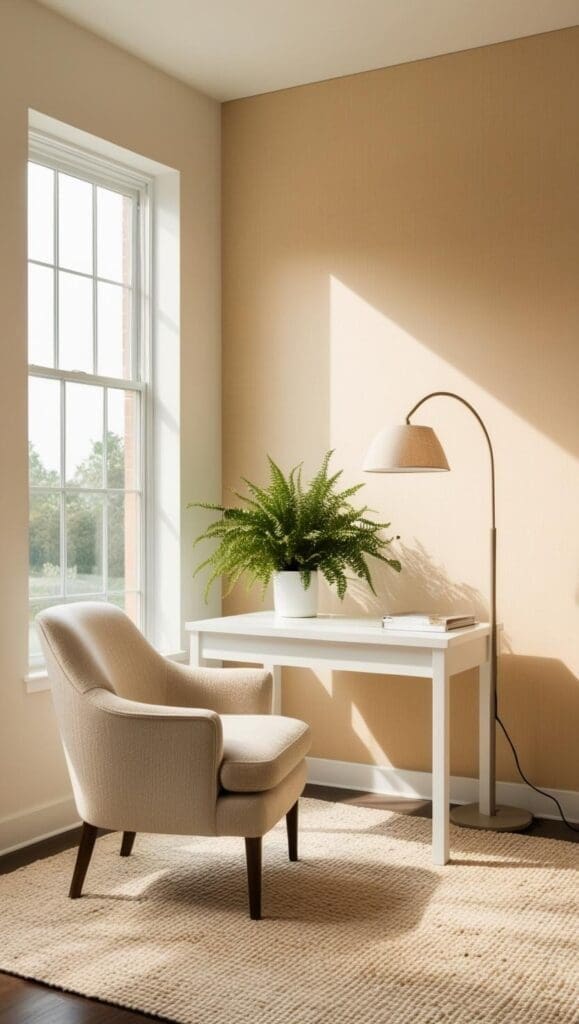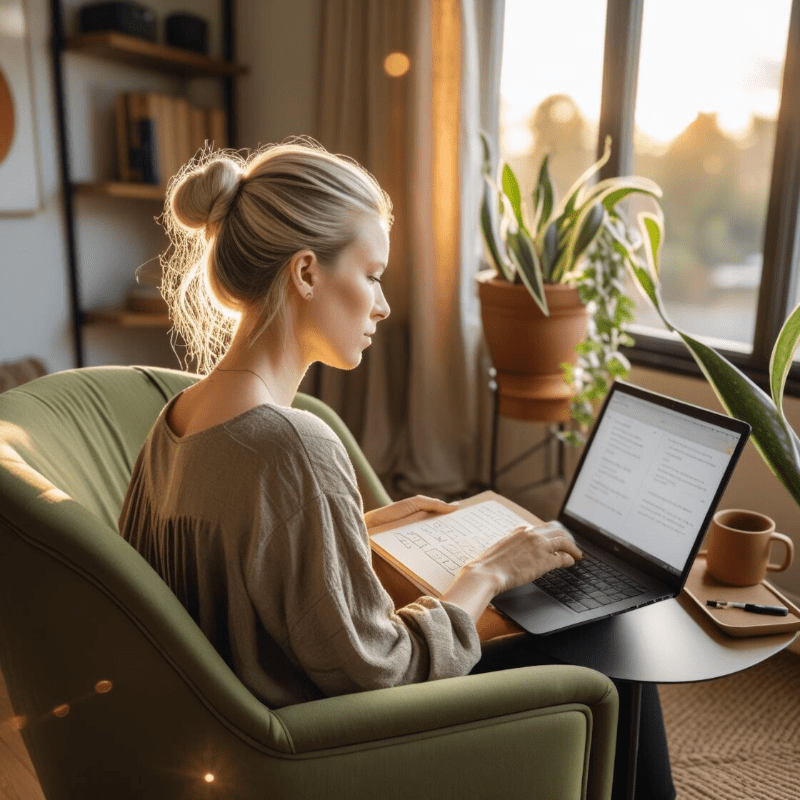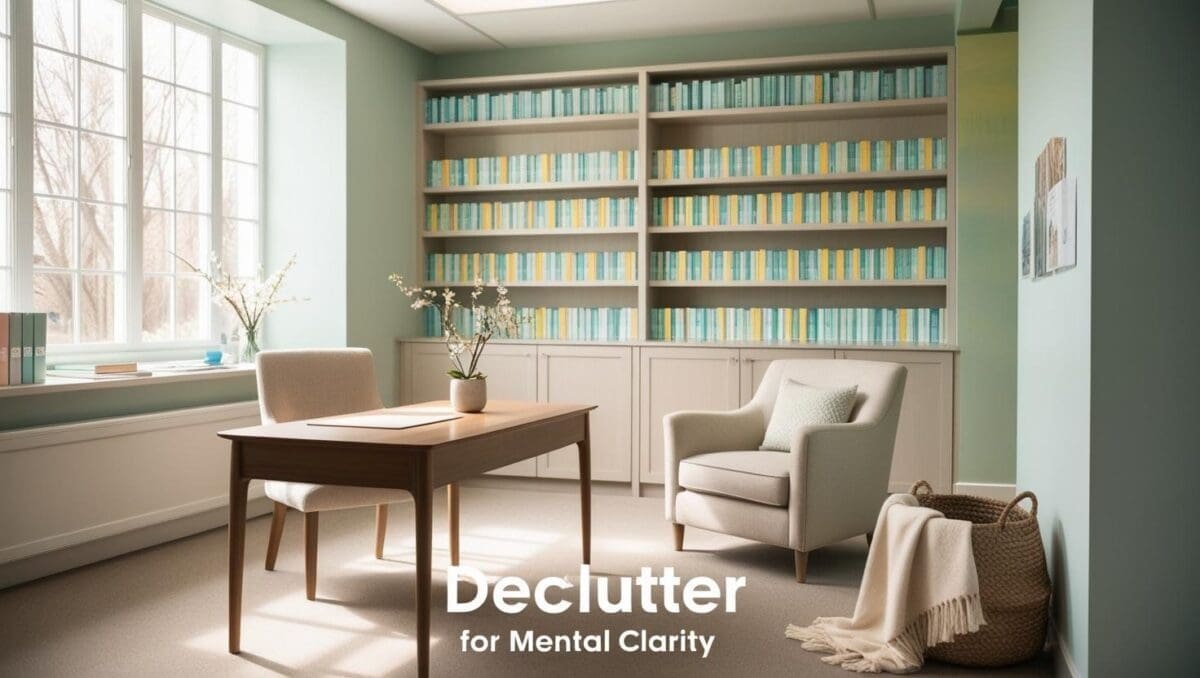Why Minimalism Matters in Therapy Offices
Imagine walking into a therapy office that instantly puts you at ease—where soft, natural light filters through sheer curtains, the air is fresh and open, and every item in the room has a purpose. There’s no visual noise, no clutter to distract from deep conversations—just a peaceful, well-curated space that invites mindfulness and calm.
This is the power of minimalist office decor in a therapy setting. Minimalism isn’t just about aesthetics—it’s about reducing distractions, creating a sense of tranquility, and fostering an environment where clients feel safe and focused. In therapy, where emotional work takes center stage, the space should encourage openness rather than overwhelm.
In this guide, we’ll explore how to design a minimalist therapy office that is both functional and inviting. You’ll learn what to keep, what to remove, and how to curate a space that promotes relaxation and emotional clarity.

1. Why Minimalism is Ideal for Therapy Offices
Minimalism is more than just a trendy decor choice—it has profound psychological benefits, particularly in a therapy setting. Here’s why it works so well:
1. Reduces Overwhelm for Clients
A cluttered environment can contribute to cognitive overload, making it harder for clients to process emotions and focus on therapy. Minimalist decor helps create mental clarity by eliminating unnecessary distractions.
2. Enhances a Sense of Calm
Studies show that a simplified, well-organized space can lower anxiety and stress levels. Soft, neutral colors and clean lines signal safety and relaxation, which is crucial in therapeutic settings.
3. Encourages Presence and Mindfulness
A minimalist office encourages clients to be fully present in the session, without unnecessary objects or clutter pulling their attention away from the conversation. The absence of distractions allows for deeper engagement and reflection.
4. Creates a More Professional Atmosphere
A well-designed minimalist therapy office looks intentional and thoughtfully arranged, reinforcing trust and professionalism. It signals that the therapist values clarity, organization, and a space that prioritizes the client’s comfort.

2. Decluttering: The First Step Toward a Minimalist Therapy Office
Minimalism begins with intentional decluttering—removing excess items to create a sense of openness and peace.
How to Declutter Your Therapy Office:
- Remove unnecessary furniture – Keep only essential seating and a desk or table for functional use.
- Organize paperwork digitally – Reduce stacks of files by using cloud storage or digital note-taking apps.
- Eliminate excess decor – Choose a few meaningful, high-quality decor pieces instead of multiple trinkets.
- Adopt a “less is more” mindset – If an item isn’t serving a functional or emotional purpose, let it go.

3. Choosing a Minimalist Color Palette for a Soothing Atmosphere
Minimalist design thrives on soft, neutral colors that promote calmness and emotional balance.
Best Minimalist Colors for Therapy Offices:
- Warm Whites & Creams – Creates an airy, open feel.
- Soft Beiges & Taupes – Adds warmth while keeping the space neutral.
- Muted Greys & Earthy Tones – Promotes a grounded, stable feeling.
- Subtle Pastels – Soft pinks, dusty blues, and sage greens can add warmth without overwhelming the senses.

4. Furniture & Layout: Simplicity with Purpose
Minimalist therapy offices should have only the necessary furniture, arranged intentionally.
Essential Minimalist Furniture:
- Comfortable, supportive seating – A well-designed therapy chair or sofa.
- A sleek, clutter-free desk – Preferably with hidden storage to keep items out of sight.
- A functional side table – For a tissue box, tea, or a small plant.
- Storage solutions – Hidden cabinets or stylish baskets to keep the space clean.

5. Lighting & Natural Elements: Creating a Warm Minimalist Feel
Good lighting is key to making a minimalist office feel warm rather than stark.
Best Minimalist Lighting for Therapy Offices:
- Soft, warm-toned LED lighting – Avoid harsh fluorescents.
- Cordless, rechargeable lamps – Stylish and flexible for different seating arrangements.
- Large windows with sheer curtains – Allow as much natural light as possible.
Bringing Nature In:
- A single statement plant – A fiddle leaf fig or snake plant can add freshness.
- Natural textures – Wood, linen, and woven elements make the space feel cozy.

Final Thoughts
Minimalist therapy office decor isn’t just about aesthetics—it’s about creating a space that feels calm, intentional, and supportive for both the therapist and the client. By focusing on simplicity, natural elements, and thoughtful design, you can transform your therapy office into a peaceful sanctuary where clients feel safe to open up.

About the Author
Hi, I’m Eve, a former school counselor with a master’s degree in School Psychology and a passionate advocate for children and families navigating sensory challenges. As a mom of children with sensory sensitivities, I deeply understand the journey special-needs parents face, and I dedicate myself to researching and sharing practical solutions to help children thrive and feel comfortable in their bodies. My goal is also to empower counselors, therapists, and psychologists with creative strategies and supportive resources to enrich their everyday practice. When I’m not writing or exploring new therapeutic approaches, you’ll find me spending quality time with my family and continually seeking inspiration from everyday moments.


